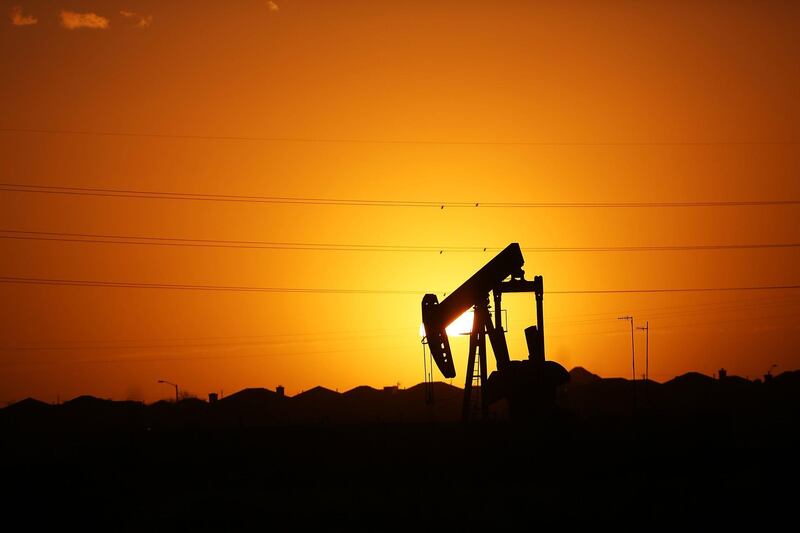The price of Brent will likely average $64 a barrel this year as compliance by Opec and its allies on production cuts is expected to lower oil inventories to below their five-year averages, according to Bank of America Merrill Lynch.
"We expect Brent crude oil prices to average $9 or 17 per cent above last year in 2018, but we then expect prices to pullback in 2019 to $60 a barrel as US supply responds and Opec starts to unwind the supply deal," the bank said in a paper on global energy.
The forecast by BofAML is conservative in comparison with recent estimates suggested by Goldman Sachs, which forecast Brent will rise to $75 a barrel in three months and average $82.5 and $75 in the next six and twelve months.
Much of the uptick in oil prices comes from sustained production cuts of around 1.8 million barrels per day that Opec and allies have administered since the beginning of last year and are expected to continue until the end of 2018.
BofAML expects Opec and non-Opec countries to gradually unwind their deal "with only modest increases in supply" as oil markets remain concerned about a resurgent US shale that is likely to offset any price gains this year.
Opec and producers outside the group led by Russia are expected to draft a charter to formalise their alliance into a "supergroup" that would effectively have around 45 per cent of the world's total oil supply under control, UAE Energy Minister and current Opec President, Suhail Al Mazrouei told The National this month.
BofAML dismissed any concerns over a "market share war" in the future among members of this pact, as these sovereign producers are likely to band together against the looming US shale threat.
Sustained prices of around $68 a barrel would require output curbs of around a million bpd to be sustained over the next five years by the alliance.
_______________
Read more:
Fortune smiles on oil majors as crude prices recover
[ The case for Russian membership of Opec ]
_______________
While natural declines from members such as Venezuela have greatly helped Opec maintain its compliance momentum, other members such as Iraq - the second largest producer in the group - are expected to boost production this year.
The Iraqi oil ministry, as part of its efforts to rehabilitate the country post-ISIL, is aiming for five million bpd production this year, provided the country is able to attract international oil companies and procure finance.
Kuwait has revised its production targets and is now looking to invest $500 billion to raise its production capacity to 4.75 million bpd by 2040, with $114bn spent over the next five years alone.
Opec production is expected to rise by 2.3 million bpd over the next five years, noted the bank, with expansion in Saudi Arabia and the UAE adding approximately 440,000 bpd to new capacity over the same time period.
Over the medium term the bank expects oil prices to average $50 to $70 a barrel through 2023. Concurrently, global oil consumption is expected to expand by 1.6 million bpd over the period, but demand is expected to taper after hitting a peak in 2020.
The price of Brent traded at $65 a barrel at 10.30am UAE time.







